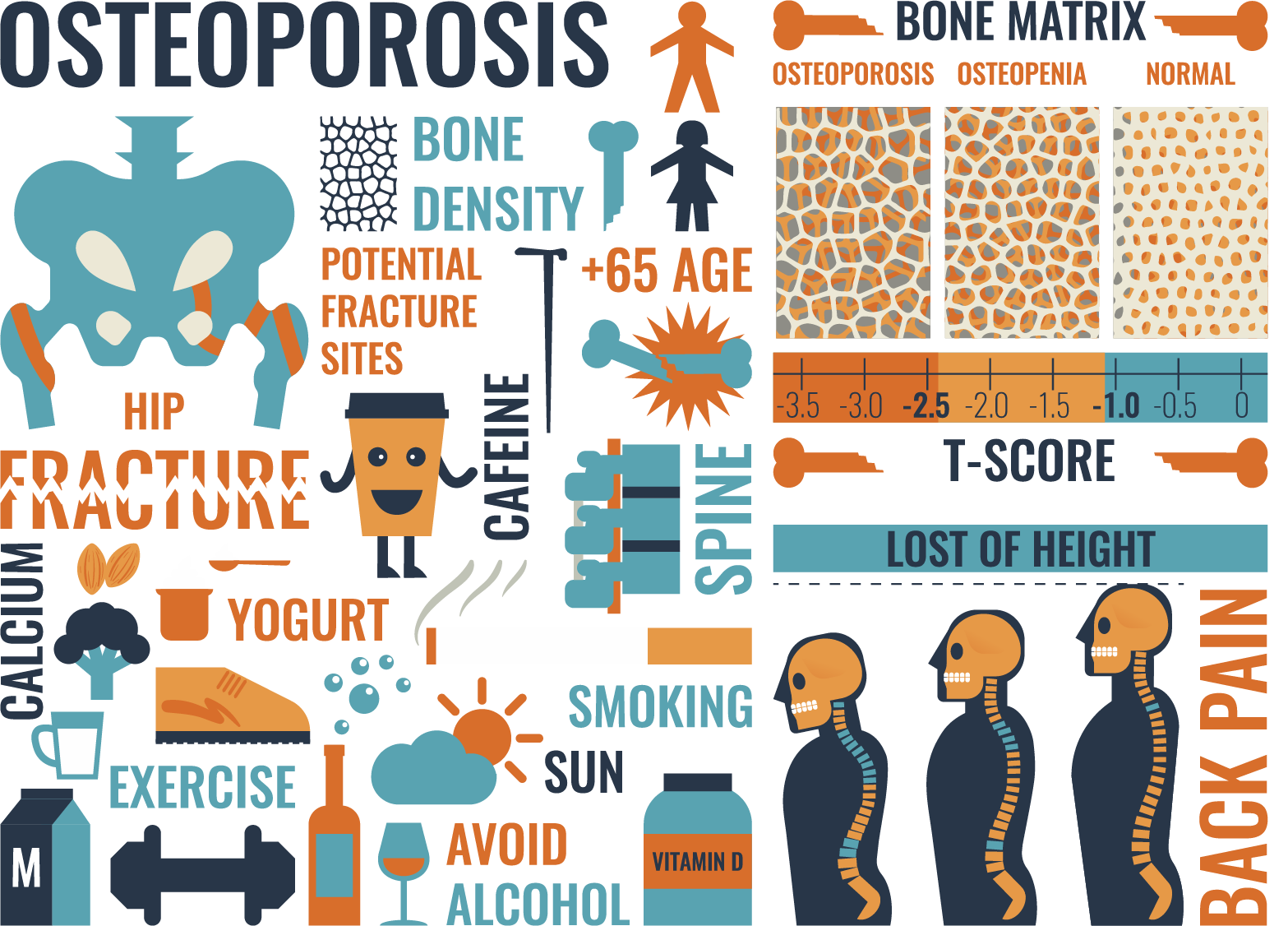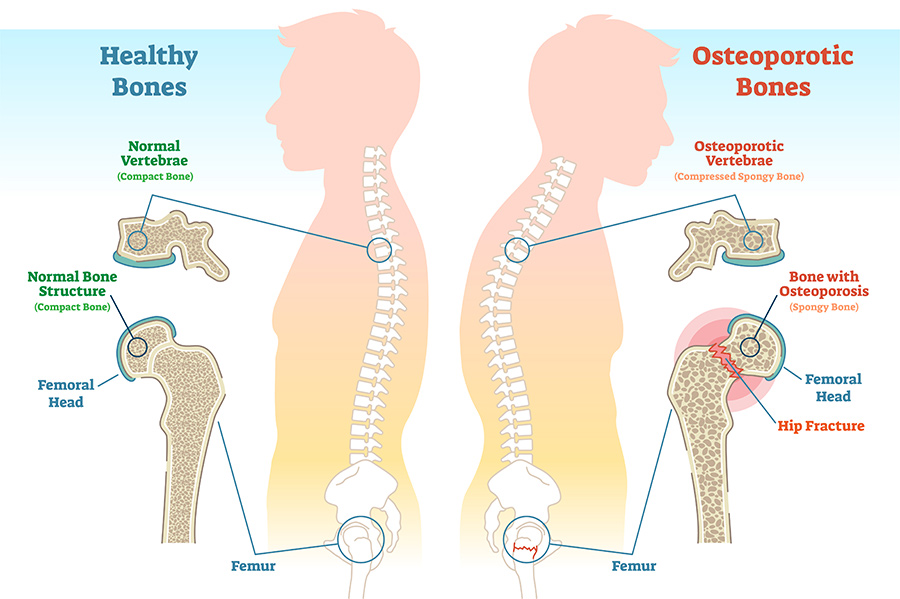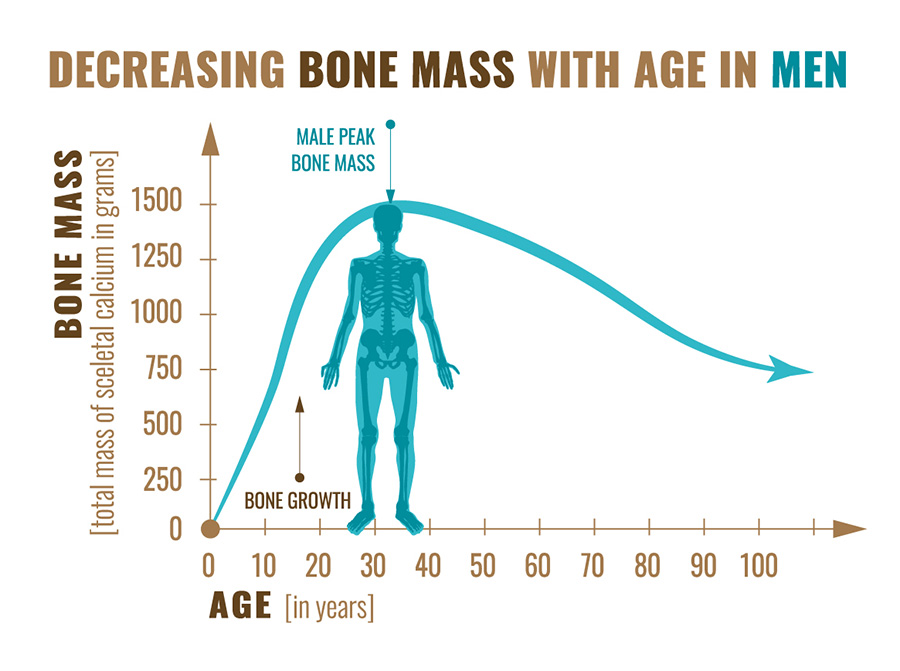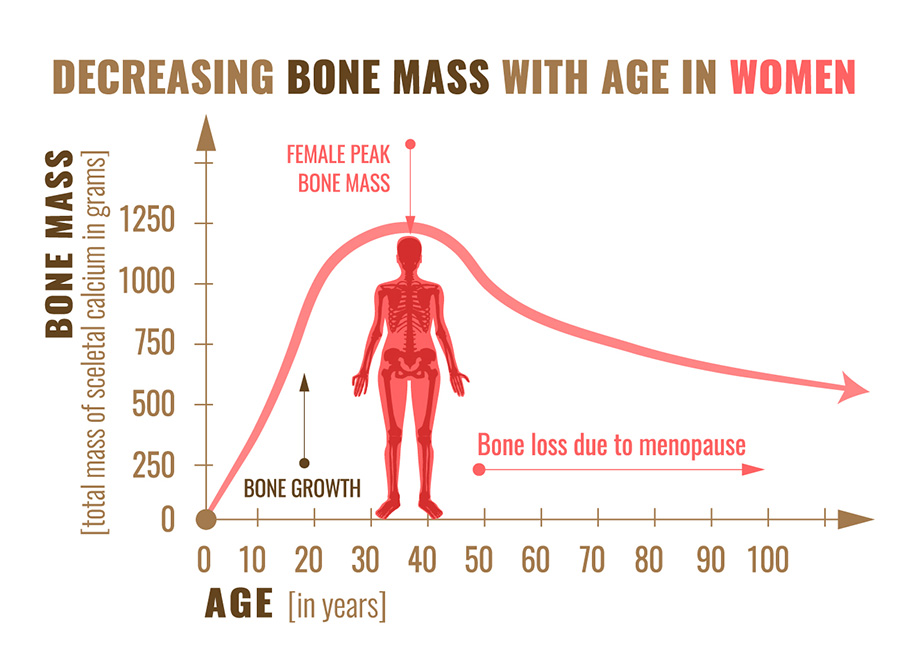
Demystifying Bone Density
Bone is one of the most durable natural materials in the world. It is, when measured by weight, even stronger than steel, and can withstand as much compressive force as a block of concrete. A cubic inch of bone can, in theory, bear the weight of over 17,000 pounds. Unlike a solid concrete block or a steel beam, however, bone is significantly lighter.
If your bones were made of steel, for example, the energy needed just to walk a short distance would be staggering, and running would be all but impossible. But thanks to an original natural structure, human bones provide us with both physical protection and a resilient frame for our soft tissues. In fact, our bones are not inanimate structures, like concrete or steel, but instead living tissues and organs, albeit hard tissues and organs.
Bone is not solid. Instead, it is composed of a sturdy matrix mostly consisting of collagen and salts. In fact, if you were to peer into a bone with a magnifying glass or microscope, you would see a fine superstructure of spongy material encased in a hard outer layer of cortical bone.
"For patients and individuals who suspect that they may have osteoporosis, it is essential to get a bone density test."
--- DR. CRISTIN DICKERSON, MD
As amazingly resilient and functional as human bones are, they are still prone to breakage when subjected to traumatic forces. They can become weak and vulnerable due to aging, disease, genetics, medications, and specific lifestyle choices. In fact, structural failures such as fractures, cracks, or partial or total breakage are not uncommon. Older persons, in particular women over the age of 65, are especially prone to fractures and breakages.
That’s why bone density, as a measure of overall bone health, is so important.
Decreased bone density is statistically tied to the likelihood of suffering bone fractures. Furthermore, bone density or bone mass is often used as a measuring stick for determining whether or not a person has osteopenia or osteoporosis, and if so, to what degree. Bone density is measured by a bone density test often performed in an imaging facility or clinic.
Why Osteoporosis Is A Big Deal
Bone density tests are typically given to diagnose osteopenia or osteoporosis. The former describes a patient or individual whose bone density is 1 to 2.5 standard deviations below the mean of a 30-year-old man or woman. Osteoporosis describes someone whose bone density is more than 2.5 deviations below. Both bone conditions are typically diagnosed via a dual-energy X-ray absorptiometry (DXA) test and are extremely common.
Osteoporosis is perhaps the most well known and devastating bone disease in the world. Worldwide, it causes an osteoporotic fracture every 3 seconds which amounts to more than 8.9 million fractures annually. That’s a lot of broken bones.

The disease is thought to affect over 200 million women worldwide as well as a large number of men. While osteoporosis overwhelmingly affects women more widely, men generally have higher rates of fracture-related mortality.
Beyond the immense pain and suffering affiliated upon millions by the disease, there are also economic costs. Osteoporosis, osteopenia, and other bone weakness diseases are a massive financial burden on patients, their families, and on society as a whole. Direct and indirect annual costs of hip fracture in 1990 were estimated at $34.8 billion for hip fractures alone and climb every year.
Hip fractures as a result of osteoporosis are perhaps the most lethal type of fracture (20 percent of all hip fracture patients die within a year) and the most expensive to treat. Per-fracture treatment range from $30,000 to over $50,000. Lifetime costs can easily exceed $80,000.

Bone Density Testing
For patients and individuals who suspect that they may have osteoporosis, it is essential to get a bone density test. These diagnostic procedures can diagnose decreased bone density, predict a patient’s chance of breaking a bone in the future, and can be used to monitor the effects of medication and treatments for low bone density.
Types of bone density tests include dual-energy x-ray absorptiometry (DXA), quantitative ultrasound (QUS), and peripheral quantitative computed tomography (QCT). DXA is the gold standard, it is the most commonly available and utilized exam to measure bone density. QUS is commonly used as a screening exam to establish whether further testing might be needed. QCT is an excellent tool for measuring bone density, especially in patients with significant arthritis.
6 Factors Affecting Bone Density
1. Lifestyle choices
Science shows that those who opt for a sedentary lifestyle may suffer from lower density bones.
2. Diet
Diet is just as important for bone health as it is for overall body wellbeing. Consuming enough calcium and phosphate is critical for maintaining good bone health. In fact, 99 percent of the vital mineral calcium is found exclusively in the bones and aids in mineralization.
3. Genes
Like many diseases and conditions, genetics plays a crucial role in determining an individual's natural bone density and risks of developing bone disease. Osteoporosis, in particular, has a strong genetic component determined by several distinct genes.
4. Gender
The unfortunate case is that women naturally have less dense bones than men in general and are thus more prone to developing osteoporosis.
5. Age
Osteoporosis and other bone density-related diseases are particularly prevalent in women over the age of 50 and men over 65. In fact, bone density typically peaks at around age 30, which means that after 30 most people’s bones begin to thin.
6. Tobacco & Alcohol
In case you needed another reason to quit or abstain from both tobacco or alcohol, both are particularly bad for your bones. Both smoking and consuming alcohol leads to a thinning of the bones and, as a result, weaker bones are more prone to breakage.
Choosing the right diagnostic exam for you takes a little time, patience, and research. Green Imaging can help.




